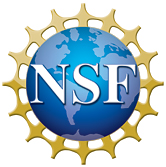Department
Metrology (Measurement Science)
The testing of new hypotheses often requires the development of new instruments, methods, and standards. Our investigations are fundamentally rooted in these essential practices.
Several projects currently underway include:
- We are developing Cavity-Ringdown Spectrometers for shipboard and in-situ (in seawater) measurement of methane and carbon dioxide concentrations and stable isotopes.
- We are developing preconcentration systems and autoanalyzers for methane, ethane, propane, butane, and pentane concentration analyses via Gas Chromatography - Flame Ionization Detection.
- We are developing portable and user friendly systems for the rapid, continuous, and underway analysis of pCH4 and pCO2 in surface waters.
- We are developing culturing techniques for the continuous measurement of dissolved methane and carbon dioxide concentrations and stable isotopes.
SELECT PUBLICATIONS
- K. J. Sparrow and J. D. Kessler (2017) "Efficient collection and preparation of methane from low concentration waters for natural abundance radiocarbon analysis." Limnology & Oceanography: Methods, doi: 10.1002/lom3.10184.
- Chan, E., J. D. Kessler, A. Shiller, D.J. Joung, F. Colombo. (2016) “Aqueous mesocosm techniques enabling the real-time measurement of the chemical and isotopic kinetics of dissolved methane and carbon dioxide.” Environmental Science & Technology, doi: 10.1021/acs.est.5b04304.
- Garcia-Tigreros Kodovska, F., K.J. Sparrow, S.A. Yvon-Lewis, A. Paytan, N.T. Dimova, A. Lecher, J.D. Kessler. (2016) “Dissolved methane and carbon dioxide fluxes in Subarctic and Arctic regions: Assessing measurement techniques and spatial gradients.” Earth and Planetary Science Letters, doi: 10.1016/j.epsl.2015.12.002.
- Pack, M.A., X. Xu, M. Lupascu, J.D. Kessler, C. Czimczik. (2015) “A rapid method for preparing high concentration CH4 and CO2 gas samples for 14C-AMS analysis.” Organic Geochemistry, doi: 10.1016/j.orggeochem.2014.10.010.
- Du, M., S. Yvon-Lewis, F. Garcia-Tigreros, D.L. Valentine, S. Mendes, J.D. Kessler. (2014) “High resolution measurements of methane and carbon dioxide concentrations and air-sea fluxes reveal the influence of methane seepage on greenhouse gas dynamics in a massive natural seep field near Coal Oil Point, California.” Environmental Science & Technology. doi: 10.1021/es5017813.
- Chen, Y., K. Lehmann, J.D. Kessler, B. Sherwood Lollar, G. Lacrampe-Couloume, T.C. Onstott, (2013) “Measurement of the 13C/12C of atmospheric CH4 using near-IR Cavity Ring-down Spectroscopy.” Analytical Chemistry, doi: dx.doi.org/10.1021/ac401605s.
- Kessler, J.D. and W.S. Reeburgh (2005). “Preparation of Natural Methane Samples for Stable Isotope and Radiocarbon Analysis.” Limnology and Oceanography: Methods, 3, 408-418.
- Currie, L.A. and J.D. Kessler (2005). “On the isolation of elemental carbon (EC) for micro-molar 14C accelerator mass spectrometry: development of a hybrid reference material for 14C-EC accuracy assurance, and a critical evaluation of the thermal optical kinetic (TOK) isolation procedure.” Atmospheric Chemistry and Physics, 5, 2833-2845.
- Currie, L.A., B.A. Benner, Jr, H. Cachier, R. Cary, J.C. Chow, E.R.M. Druffel, T.I. Eglinton, O. Gustafsson, P.C. Hartmann, J.I. Hedges, J.D. Kessler, T.W. Kirchstetter, D.B. Klinedinst, G.A. Klouda, J.V. Marolf, C.A. Masiello, T. Novakov, A. Pearson, K.M. Prentice, H. Puxbaum, J.G. Quinn, C.M. Reddy, H. Schmid, J.F. Slater, J. Watson, and S.A. Wise (2002). "A Critical Evaluation of Interlaboratory Data on Total, Elemental, and Isotopic Carbon in the Carbonaceous Particle Reference Material, NIST SRM 1649a." Journal of Research of the National Institute of Standards and Technology, 107, 279-298.
- Currie, L.A., J.D. Kessler, J.V. Marolf, A.P. McNichol, D.R. Stuart, J.C. Donoghue, D.J. Donahue, G.S. Burr, D. Biddulph (2000). “Low-level (submicromole) Environmental 14C Metrology.” Nuclear Instruments and Methods B, 172, 440-448.
“Any opinions, findings, and conclusions or recommendations expressed in this material are those of the author(s) and do not necessarily reflect the views of the National Science Foundation."









